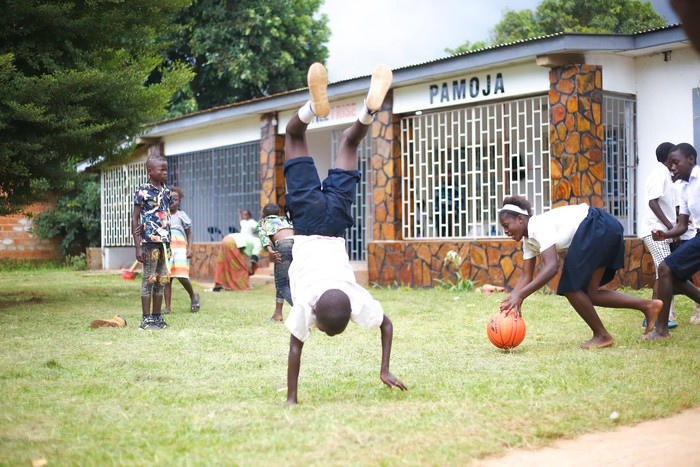After months of intense work, Still I Rise opens the doors of Pamoja, the emergency and rehabilitation school in the Democratic Republic of the Cong
o: the goal is to free children and adolescents from working in the cobalt mines, with a rehabilitation program that it will lead to recovering lost school years and being reintroduced into the state school system.
The institute is located in the Mutoshi area, in Kolwezi, near one of the most important mining districts in the world.
Pamoja in Swahili means "together", as in the tradition of the Still I Rise emergency schools.
'We will start the activities of Pamoja in a space of three classrooms, a common room, a library still under construction and a kitchenette: in this first phase, we will organize psycho-social support meetings and various recreational activities to create a sense of community and trust with students and families, 'explains Giovanni Volpe, Operations Manager of Still I Rise.
'Every day we will ensure the distribution of breakfast and lunch.
We will complete the renovation of the building at the end of March, with the development of the teachers 'room, the classroom for psycho-social support and the outdoor class.'
By the summer, Still I Rise will introduce other educational activities and an accelerated learning program aimed at acquiring language and math skills in line with national educational standards.
At full capacity, Pamoja will be able to accommodate up to 120 students, aged between 9 and 14 years.
The school staff is entirely local.
The intervention proposed by Still I Rise is of an emergency and rehabilitative type, on the same model already started in Samos, Greece, and in the city of Ad Dana, North West Syria.
To remove children from child labor, the organization provides strategies already tested in other contexts of operation: these include awareness-raising activities and distribution of basic necessities to families, such as food packages, clothes and hygiene kits, so that the children are no longer forced to work and can receive the education they deserve.
Breakfast and lunch will also be guaranteed for students every day.
The Democratic Republic of the Congo is one of the richest and at the same time poorest countries in the world.
Its natural resources are unparalleled: underground deposits of precious minerals and the soil is covered by the second largest rainforest in the world, which provides valuable timber.
Alone, the country produces more than 3% of the copper and 50% of the cobalt sold in the world, as well as diamonds, coltan, gold and oil. interests of foreign companies in the area.
The result is dramatic: the country ranks 175th out of 189 nations by human development index and 72% of people live in conditions of extreme poverty on less than 1.50 euros a day, without access to essential services.
The situation of children is catastrophic: 43% suffer from malnutrition, 26.7% of children of primary age are out of school (equal to 3.5 million) and 86% of 10-year-olds are unable to understand an elementary text.
In the south of the country, where most of the mining is concentrated, there is also the highest infant mortality rate in the world: 1 in 5 children dies before the age of 5.
Child labor is a well-known scourge: although, after a report of denunciation published by Amnesty International, the country announced its intention to eliminate the employment of children in the mining sector by 2025, currently they continue to be exploited without any respect of their human rights.
A 2014 UNICEF estimate speaks of about 40 thousand children engaged in the extraction of cobalt, but the numbers could be higher given the difficulty of census of the phenomenon.
The work shifts reach 12 hours a day, during which the minors dig the rock with their bare hands, carrying bags of stones that are very heavy for their age.
The salary ranges from $ 1 to $ 2 per day, reaching as much as $ 10 in some cases, at the discretion of the merchants who pay based on the weight and purity of the minerals extracted.
This is real child exploitation, of which any third country - which does not carry out controls on the cobalt chain and other mineral resources necessary for technological development - can be considered equally complicit and responsible

